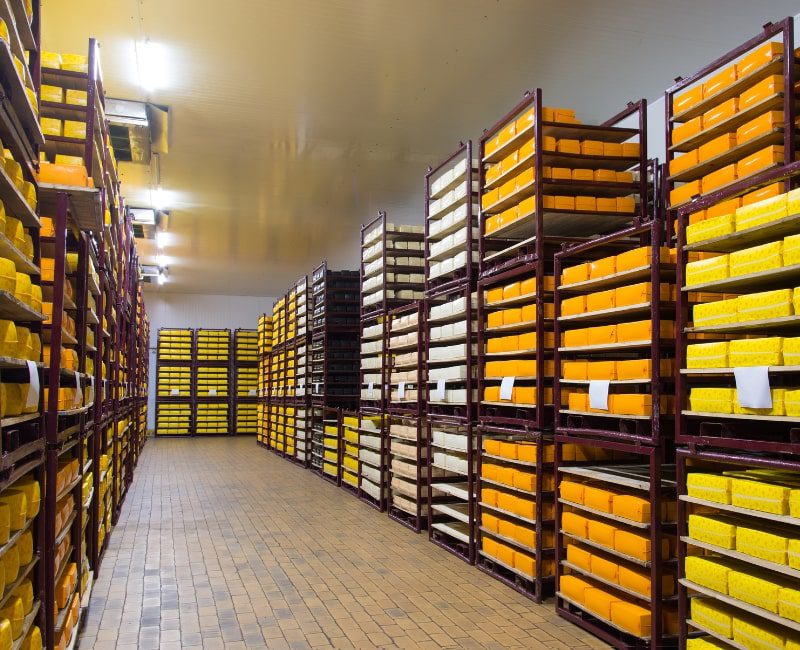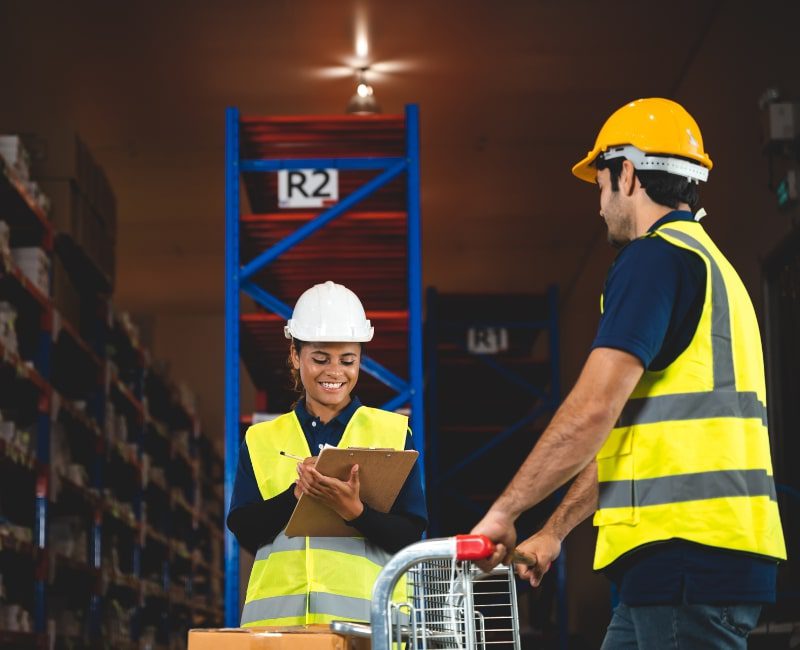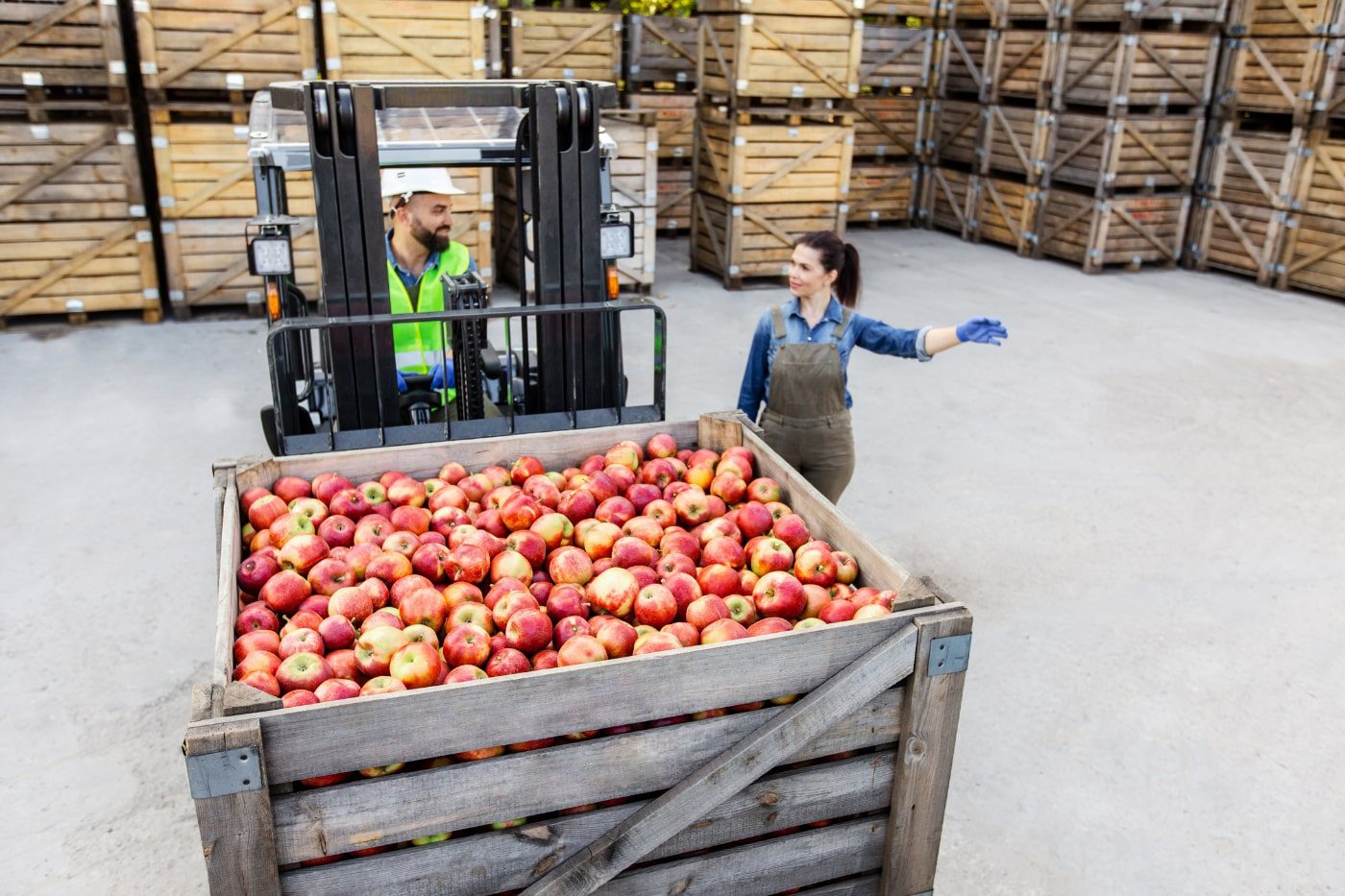Are you losing sleep over the complexities of food-grade compliance? Moving food products safely is a high-stakes operation. It involves more than simply putting items on a truck. Food-grade logistics demands a level of precision that standard supply chains don’t require.
Temperature control, strict sanitation, and meticulous record-keeping are non-negotiable. These standards are essential to protecting consumers and maintaining product quality. Navigating this landscape requires specialized knowledge and experience. Let’s explore the key elements of managing the strict standards for food-grade products and what it takes to ensure the safe and efficient movement of these critical goods.
The Critical Nature of Food-Grade Standards
Handling food products isn’t like moving standard goods; the stakes are higher, and the requirements are far more stringent. Understanding the critical nature of food-grade standards is essential for anyone involved in the food supply chain. Let’s break down why these standards exist and what they entail.
Why Food Grade is Different
Food-grade products possess a unique vulnerability that sets them apart from typical commodities. The potential for contamination permeates every stage of the supply chain. This vulnerability stems from the inherent nature of consumables, where even minute deviations can have significant consequences.
- Contamination Risks: Food-grade items are susceptible to a wide array of contaminants. These include physical, chemical, and biological hazards.
- Consumer Safety: Any lapse in handling can directly translate to serious health risks for consumers, ranging from mild illnesses to severe, life-threatening conditions.
- Recall and Brand Damage: A single contamination incident can trigger widespread and costly recalls. These events not only result in immediate financial losses but also inflict lasting damage to a brand’s reputation and consumer trust.
- Financial Impact: As the FDA indicates, food recalls lead to substantial financial burdens, encompassing recall logistics, product disposal, and legal liabilities. The repercussions extend beyond immediate expenses, impacting long-term market presence and consumer loyalty.
Regulatory Landscape
The food industry operates within a stringent regulatory environment, designed to safeguard public health and ensure product integrity. Understanding and adhering to these standards is the foundation of safe and reliable food distribution.
- FSMA (Food Safety Modernization Act): This landmark legislation, enacted by the FDA, shifts the focus from reactive responses to proactive prevention. It mandates that food businesses implement robust food safety plans and preventative controls.
- Third-Party Certifications: Certifications like SQF (Safe Quality Food) and BRC (British Retail Consortium) serve as additional layers of assurance. These certifications demonstrate adherence to internationally recognized food safety standards, enhancing consumer confidence and market access.
- Traceability: A robust traceability system is indispensable. It enables swift and accurate identification of affected products in the event of a recall. This capability minimizes the scope of recalls and mitigates potential harm to consumers. It also allows for auditing of the supply chain to prevent future issues.
- Compliance: A 3PL that specializes in food-grade logistics is well-versed in these regulations. This allows food producers to focus on their core business while having the peace of mind that their product is being handled correctly.
Core Components of Food-Grade Logistics
Food-grade logistics is a multifaceted operation. Every step, from storage to delivery, demands attention to detail. Mastering these core components is crucial for ensuring the safe and efficient movement of food-grade products:

Warehousing and Storage
The warehouse is the first line of defense against contamination.
- Temperature Control: Many food products require specific temperature ranges. Maintaining these temperatures is crucial to prevent spoilage and bacterial growth. Consistent monitoring and reliable climate control systems are essential.
- Sanitation and Pest Control: Regular cleaning and sanitization are non-negotiable. Effective pest control measures prevent infestations that can compromise product integrity.
- Segregation: Different food products must be stored separately to prevent cross-contamination, especially allergens. Clearly defined storage zones and protocols are necessary.
- Material Handling: Proper handling techniques minimize the risk of damage and contamination. Trained personnel and appropriate equipment are essential.
Transportation
Moving food products requires more than just a truck. It needs specialized equipment and procedures.
- Refrigerated Transport: Refrigerated trucks maintain consistent temperatures during transit. Pre-cooling and temperature monitoring are critical.
- Cleanliness and Hygiene: Trailers must be thoroughly cleaned and sanitized before each load. Regular inspections ensure compliance.
- Preventing Cross-Contamination: Proper loading and securing of cargo is important. Preventing the mixing of allergenic products with other products.
- Tracking and Monitoring: Real-time tracking systems provide visibility into the location and temperature of shipments. This allows for proactive intervention if issues arise.
Packaging and Labeling
Packaging and labeling play a vital role in protecting and tracking food products.
- Understanding Food-Safe Packaging: Packaging must be made from materials that won’t contaminate food. It should also protect against physical damage.
- Proper Labeling for Traceability: Accurate labeling is essential for traceability and recall purposes. Labels must include relevant information such as product name, lot number, and expiration date.
- Preventing Packaging Damage: Proper palletizing and wrapping are important. Proper loading and unloading techniques.
Documentation and Traceability
Accurate records and robust tracking systems are the backbone of food-grade logistics.
- Importance of Accurate Records: Detailed records of temperature, sanitation, and handling are essential for compliance. These records are also crucial for audits and investigations.
- Robust Tracking Systems: Advanced tracking systems provide real-time visibility and traceability. This enables a rapid response to any issues.
- Recall Capabilities: A strong tracking system allows for quick and accurate recalls. This protects consumers and minimizes financial losses.
Overcoming Common Challenges in Food-Grade Logistics
Food-grade logistics throws curveballs. Successfully navigating these challenges requires expertise and proactive planning.
Temperature Fluctuations
Maintaining consistent temperatures is a constant battle. Unexpected shifts can jeopardize product quality.
Mitigation Strategies:
- Using redundant cooling systems provides backup.
- Insulated packaging and temperature-controlled storage help buffer against changes.
- Pre-cooling of trailers before loading.
Importance of Monitoring:
- Real-time temperature monitoring systems alert to deviations.
- Regular checks and data logging provide a record of temperature stability.
Cross-Contamination Risks
Preventing cross-contamination protects consumers and maintains product integrity.
Preventive Measures:
- Dedicated storage areas for allergens and specific product types.
- Strict traffic flow patterns within warehouses.
- Proper training for all warehouse personnel.
Sanitation Protocols:
- Regular deep cleaning of facilities and equipment.
- Documented sanitation procedures.
- Use of food-grade cleaning agents.
Maintaining Compliance
The regulatory landscape is ever-evolving. Staying compliant is a continuous process.
Understanding Regulatory Updates:
- Staying informed about changes to FSMA and other regulations.
- Participating in industry training and workshops.
- Working with a 3PL who stays up to date on regulations.
Preparing for Audits:
- Maintaining meticulous records and documentation.
- Conducting regular internal audits.
- Ensuring all staff are trained on compliance procedures.
Managing Seasonal Demands
Food-grade logistics often experience seasonal surges. Holiday rushes or harvest seasons can strain resources.
- Proactive planning is key.
- Flexible warehousing and transportation solutions are necessary.
- Communication with all parties involved is vital.
3PL Partnerships for Success
Navigating the stringent requirements of food-grade logistics often calls for more than internal resources. That’s where strategic partnerships come into play. Collaborating with a specialized 3PL can unlock significant benefits and provide a competitive edge.

The Value of a Specialized 3PL
Choosing a 3PL with specific food-grade expertise provides significant advantages.
- Expertise in Food-Grade Requirements: Specialized 3PLs understand the nuances of food safety regulations. They stay current with evolving standards and best practices.
- Investment in Specialized Equipment: These providers invest in temperature-controlled warehouses and refrigerated transport. They utilize advanced monitoring systems for real-time tracking.
- Experience with Audits and Compliance: They are well-versed in audit preparation and compliance documentation. This experience streamlines the audit process and reduces risk.
Tailored Solutions
One size doesn’t fit all in food-grade logistics. Customized solutions are essential.
- Understanding Unique Client Needs: A good 3PL takes the time to understand each client’s specific requirements. This includes product characteristics, storage needs, and distribution patterns.
- Creating Customized Logistics Plans: They develop tailored logistics plans that address specific challenges. These plans optimize efficiency and minimize risk.
The Importance of Communication
Clear and consistent communication is the cornerstone of a successful partnership.
- Open lines of communication ensure that all parties are informed.
- Regular updates and transparent reporting build trust.
- Proactive communication allows for quick responses to potential issues.
Partnering with a 3PL that specializes in food-grade logistics provides peace of mind. They are equipped to handle the complexities of food-grade distribution, allowing you to focus on your core business.
Securing Your Food-Grade Supply Chain
In food-grade logistics, there’s no room for shortcuts. The integrity of the food supply chain hinges on rigorous adherence to industry standards. From temperature control to traceability, every detail matters. These standards are in place to protect consumers and ensure product quality.
Navigating the complexities of food-grade logistics can be daunting. Partnering with a 3PL that possesses specialized expertise can provide invaluable support. This collaboration allows businesses to focus on their core competencies, knowing their products are in capable hands.
Our team is committed to upholding the highest standards of food-grade logistics. We provide comprehensive warehousing, transportation, and distribution solutions tailored to the unique needs of food producers. Our focus is on maintaining the integrity and safety of your products throughout the supply chain.



